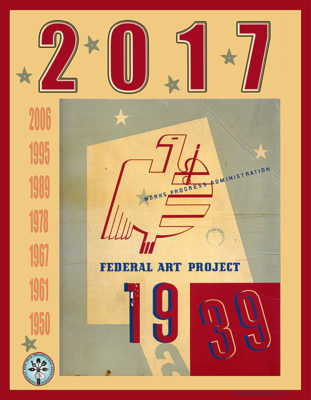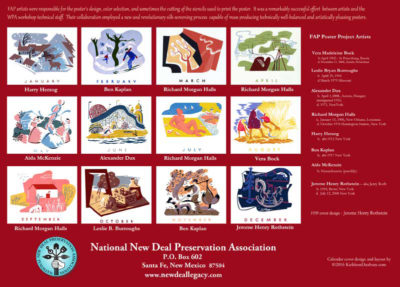1939 Federal Art Project Calendar

At times New Deal research will go off in unexpected directions such as the Federal Art Project (FAP) administered by the Works Progress Administration (WPA). Because several CCC artists would later find employment with other government art programs searching selected records from these federal agencies can provide a better understanding of an artists journey.
On a recent trip to the National Archives and Records Administration (NARA) in College Park, Maryland multiple boxes were requested from WPA Record Group 69. Midway through a container labeled FAP State Offices New York was a folder marked 1939 FAP. Inside this archival envelope were original poster prints from a FAP calendar for 1939; considering their age the paper stock was still firm and the images remained bold and impressive.
A revolutionary new silk screened process, designed by a WPA artist, was used for these poster prints. Enabling mass production with results considered, in the 1930’s, to be technically superior and artistically pleasing.
A quick check revealed that the calendar dates for 1939 are the same for 2017. How fortunate to find these vintage 78 year-old federal art prints and how fitting to revitalize these images for another years use.
2017 NNDPA FAP Calendar
Now available is a vibrant and historic 2017 calendar, 8.5″ x 11″ full color, 14 month wall calendar offered exclusively through the National New Deal Preservation Association (NNDPA) website.
“A perfect gift for the history, preservation and art buffs in your world. After all, New Deal art is uniquely American.” NNDPA

But, the story doesn’t end there.
Working with these vintage images created a flood of questions . . .
What was the FAP? Who were these eight artists? What is the story behind this calendar – for whom, why and how was it printed?
1939 was a year that changed world history.
The publication of the original 1939 WPA/FAP calendar was done in a spirit of a good will. Unfortunately, this well meaning gesture was ill-timed and ill-fated.
But that’s another story . . .